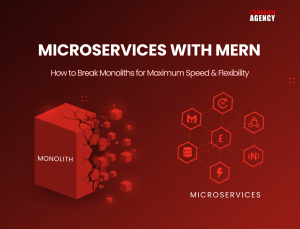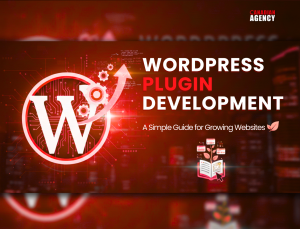In today’s competitive eCommerce landscape, choosing the right platform is not just a business decision—it’s a growth strategy. For many businesses, Shopify has become the go-to platform for launching and scaling online stores. However, as sales increase and operational needs expand, Shopify Plus often becomes a key consideration for businesses. While both platforms share the same foundation, they are designed to serve businesses at different stages of growth.
If you’re a developer, understanding the key differences between Shopify and Shopify Plus is crucial. It helps you guide clients toward the right solution, build tailored experiences, and unlock the full potential of the platform. Let’s break it down.
1. Understanding the Core Difference
Shopify is designed for startups, small businesses, and mid-sized brands that want a reliable and easy-to-manage e-commerce store. It offers flexibility with themes, apps, and integrations at an affordable price point. Shopify Plus, on the other hand, is Shopify’s enterprise-level solution. It caters to high-volume businesses, large brands, and organizations that need advanced customization, automation, and dedicated support. Think of Shopify Plus as an upgraded version—built to scale with businesses generating thousands of orders daily. In short, Shopify is about starting and growing, while Shopify Plus is about scaling and optimizing.
2. Pricing Structure
Shopify pricing ranges from $39 to $399 per month, depending on the plan (Basic, Shopify, or Advanced). It’s cost-effective for small and medium businesses. Shopify Plus starts at approximately $2,000 per month, with pricing that scales based on sales volume and requirements. While it’s a bigger investment, it comes with features designed to reduce operational costs and boost conversions. For developers, this means clients on Shopify Plus often have bigger budgets for custom development and advanced integrations.
3. Customization and Flexibility
Shopify customization mainly revolves around themes (via Shopify Theme Store or custom themes built with Liquid, Shopify’s template language). Developers can tweak storefront design, checkout options (to an extent), and app integrations. Some limitations exist—especially around checkout customization. Shopify Plus offers complete checkout customization with access to Shopify Scripts and Script Editor. This allows developers to design personalized checkout flows, apply custom discounts, and build tailored customer experiences. Greater access to Shopify APIs, making it easier to integrate with ERPs, CRMs, and other enterprise systems. Advanced developer tools for managing multi-store and multi-channel operations. Developers working with Shopify Plus have more creative control and can deliver solutions that directly impact conversion rates.
4. Scalability and Performance
One of the most significant advantages of Shopify Plus is scalability.
Shopify works well for businesses generating moderate sales. However, during high-traffic events like flash sales or Black Friday, performance could be a concern for very high-volume merchants. Shopify Plus is designed to handle unlimited bandwidth and high transaction volumes, ensuring websites remain fast and stable even under heavy loads. From a development perspective, this means fewer performance bottlenecks to troubleshoot and more room to focus on building features that enhance user experience.
5. Checkout Experience
The checkout page is the heart of conversions.
Shopify checkout experience is standardized and only allows for minor branding adjustments, such as colors, fonts, and logos. Shopify Plus provides complete checkout control—developers can implement advanced customizations such as dynamic pricing, loyalty rewards, upselling, and personalized checkout flows. For developers, Shopify Plus offers the opportunity to influence a store’s revenue through optimized checkout designs directly.
6. Automation Capabilities
Shopify merchants can use apps for automation (like order management, notifications, and marketing). However, this often adds extra costs and dependencies. Shopify Plus comes with Shopify Flow, an automation tool that enables businesses to create workflows without coding. Developers can design advanced rules for order management, customer segmentation, and fraud detection. For large companies, automation saves countless hours, allowing developers to create more strategic, high-value customizations rather than repetitive fixes.
7. Multi-Store and International Capabilities
Expanding globally is a significant goal for growing brands.
Shopify supports multiple languages and currencies, but requires third-party apps or workarounds to manage various storefronts fully. Shopify Plus enables businesses to run up to 10 storefronts under one account. This is ideal for brands targeting different regions with localized content, currencies, and payment methods.
Developers can create region-specific experiences without having to juggle multiple logins or disconnected backends.
8. Dedicated Support and Resources
Shopify standard support is available via chat, email, or phone. While reliable, it may not always be immediate. Shopify Plus offers a dedicated account manager (Merchant Success Manager), 24/7 priority support, and access to the Shopify Plus Partner Program. This level of support ensures that developers can resolve technical issues more quickly and receive early access to new features and beta programs.
9. API and Integration Access
Shopify provides API access, but with rate limits that may restrict advanced integrations. Shopify Plus offers higher API limits, enabling seamless integrations with enterprise tools like ERPs, CRMs, fulfillment systems, and marketing platforms. Developers working on Shopify Plus have the freedom to build complex integrations without worrying about API bottlenecks.
10. Security and Compliance
Shopify is already PCI-DSS compliant, ensuring secure transactions. Shopify Plus goes a step further with advanced security features, dedicated SSL certificates, and compliance support for global standards (important for enterprises handling large-scale transactions). Developers can reassure enterprise clients that their data and customer information remain fully secure.
11. When Should Businesses Choose Shopify vs Shopify Plus?
Choose Shopify if:
- You’re a startup or small-to-medium business.
- You don’t need heavy customization.
- Budget is a key factor.
- Your sales volume is steady but not at an enterprise level.
Choose Shopify Plus if:
- You’re an enterprise or scaling rapidly.
- Checkout customization is a priority.
- You need multiple storefronts or global expansion.
- You handle high transaction volumes.
- You require advanced API integrations and automation.
Final Thoughts
Both Shopify and Shopify Plus are powerful eCommerce platforms, but they are designed to serve different business needs. Shopify is an excellent choice for startups and growing businesses seeking a cost-effective, reliable solution with all the essential features to launch their online store. It offers flexibility, ease of use, and enough functionality to support businesses in their early and mid-growth stages. On the other hand, Shopify Plus is built for enterprises and high-volume merchants that require more advanced capabilities. With features like custom checkout flows, automation through Shopify Flow, multiple storefronts, and higher API limits, it provides developers with greater freedom to innovate and build enterprise-grade solutions. It also comes with scalability and dedicated support that growing global brands often need.
For developers, the choice between Shopify and Shopify Plus often depends on the client’s growth stage, business goals, and operational complexity. Shopify allows developers to deliver functional, well-performing stores for smaller businesses, while Shopify Plus opens the door to deeper customization and innovation. Ultimately, understanding these differences ensures that you recommend the right platform—helping businesses not only launch but also truly thrive in the long run.




